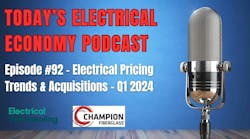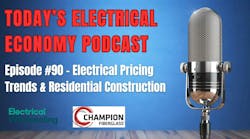PMI stays in growth mode. The Purchasing Managers Index increased one point in September to 51.6 percent, indicating expansion in the manufacturing sector for the 26th consecutive month, at a slightly higher rate. Bradley Holcomb, chair of the Tempe, Ariz.-based Institute for Supply Management’s Manufacturing Business Survey Committee said, “Comments from respondents generally reflect concern over the sluggish economy, political and policy uncertainty in Washington, and forecasts of ongoing high unemployment that will continue to put pressure on demand for manufactured products.”
AIA Billings Index slides again in September. Following the first positive score in four months, the Architecture Billings Index (ABI) reversed direction. The ABI reflects the approximate nine- to twelve-month lag time between architecture billings and construction spending. The American Institute of Architects (AIA) reported the September ABI score was 46.9 points, following a score of 51.4 points in August. This score reflects a sharp decrease in demand for design services (any score above 50 points indicates an increase in billings). The new projects inquiry index was 54.3 points, down from a reading of 56.9 points the previous month.
“It appears that the positive conditions seen last month were more of an aberration,” said AIA Chief Economist, Kermit Baker. “The economy is weak enough at present that design activity is bouncing around more than usual; one strong month can be followed by a weak one. The economy needs to be stronger to generate sustained growth in design activity.”
Leading Indicators dip in September. The Conference Board Leading Economic Index (LEI) for the U.S. increased 0.2 percent in September to 116.4, following a 0.3 percent increase in August and a 0.6 percent increase in July. Said Ken Goldstein, an economist at The Conference Board, “The LEI is pointing to soft economic conditions through the end of 2011. There is a risk that already low confidence — consumer, business and investor—could weaken further, putting downward pressure on demand and tipping the economy into recession. The probability of a downturn starting over the next few months remains at about 50 percent.”








